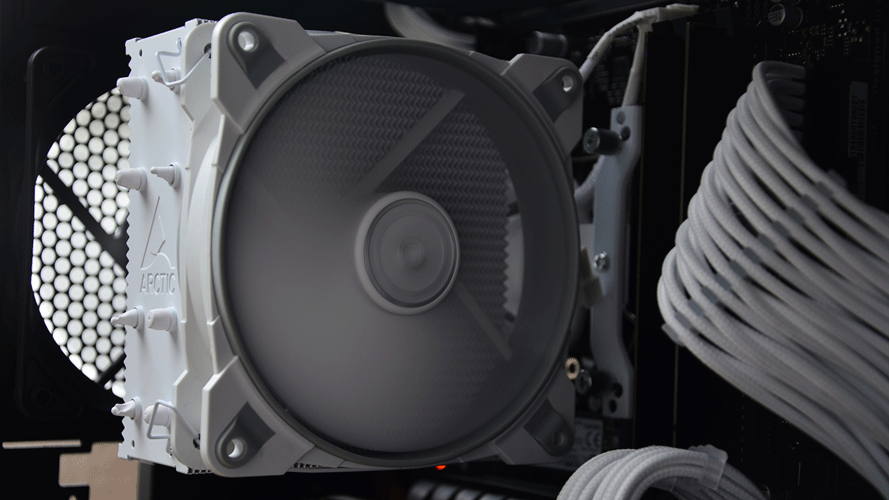It can be frustrating when your computer constantly runs too hot and you’re not sure why. Perhaps it’s a software error, or perhaps something more sinister is happening.
One common reason is that your GPU temperature is too high. This, in turn, causes hardware malfunction or software errors.
GPU temperature is a big problem in the performance of modern computers. The normal GPU temperature range is between 65 degrees to 85 degrees Celsius, or 149 degrees to 185 degrees Fahrenheit.
If the temperature exceeds the upper range, it causes your computer to start overheating.
This article will cover why your GPU temperature runs so high and the steps you should take if your computer overheats.
What are GPUs?
The GPU is a visual processing unit. It is much more powerful than the CPU. The GPU has the ability to process data quickly. This makes it perfect for graphics-intensive games or virtual reality applications.
In short, a GPU is a processor designed for the rendering of 3D computer graphics.
The term “GPU” originally referred to GPUs made by ATI Technologies Inc. But now the term mainly refers to NVIDIA-made GPUs. However, this is an informal use of language because AMD also has its own line of GPUs.
The Difference Between GPUs and CPUs
Don’t confuse GPUs with CPUs.
A computer’s central processing unit (CPU) and graphics processing unit (GPU) are both important parts of the computer. The CPU handles general tasks like scheduling, storing, and retrieving information; by comparison, the GPU handles computationally intensive tasks.
So the relationship between CPUs and GPUs is symbiotic. The CPU processes data at a high level while the GPU processes it at a lower level to produce visuals onscreen.
Responsive websites rely on both of these cores in their system to run smoothly. Meanwhile, gaming applications use one or both of these cores depending on what they need to be done.
Computers with multiple GPUs process visual tasks at a greater speed than computers with just one GPU. This is because parallel computing capabilities exist in GPUs relative to CPUs.
Overheating problems in a computer are mainly due to GPUs running too hot.
GPU Temperature Basics
Too much heat slows the processing ability of your computer. A modern graphics card will have a GPU that can easily run at clock speed. It is not only comparable to a fast CPU but also generates just as much heat.
A graphic card will have a heatsink. Its purpose is to cool the CPU. Some cards also have cooling fans. Unfortunately, as dust and dirt build in the heatsink—a process that occurs over time—more heat accumulates than dissipates.
You can prevent overheating by cleaning your graphics card. This will prevent computer failure.
The GPU’s heat sink on the graphics card acts as a barrier between the card and its components. It cools both the GPU and other components on the motherboard, such as RAM memory chips and hard drive.
Heats sinks are made of copper or aluminum. These conductive metals allow heat to move to the heatsink from the cooler’s base. A fan blows air out of the heatsink to keep the CPU at a safe operating temperature.

Common Causes of High Computer Temperatures in Laptops and PCs
An overheating GPU or processor is the most likely cause of your computer temperatures rising in your PC or Laptops. Laptops are more susceptible to overheating than desktops because their tighter cases restrict good airflow.
Here are two common causes of overheating in laptops:
1. A faulty power supply unit causes a laptop’s temperature to run high.
2. If you are using a laptop on your lap, your body heat raises its temperature.
Here are two common causes of overheating in PCs and laptops:
1. As dust accumulates inside the laptop over time, it causes the fan to work harder. You’ll notice the fan become noisier.
2. If you are running energy-hogging software in high temperatures, it can cause temporary thermal damage.
Best Practices for Optimizing the Cooling of Your GPU
The best practices for cooling a GPU will differ from one computer to the next. One computer may need a liquid cooling system. Another may need a fan. And yet another may need a new heat sink.
The most important factor in keeping your GPU cool is the airflow going over it. Also, don’t put your GPU near any equipment that creates excess heat.
Many hardware and software tools are available for those who have invested in an older generation of GPUs.
How to Reduce Thermal Dissipation with Effective Airflow And Fan Settings
Improper airflow and fan settings can cause a lack of proper heat dissipation in your office.
Sufficient airflow is essential for good thermal dissipation. Use high-speed fans to get rid of hot air and low-speed fans to move cool air. Choose from different fan settings depending on your computing needs.
How to Balance Pascal GPUs Performance And Noise Levels With Effective Cooling Solutions
Pascal is a high-end graphics card. It has a few drawbacks—the high power draw for excessive heat. Cooling solutions mitigate this issue and allow for efficient use of Pascal cards.
To get the most out of Pascal’s performance with minimal noise levels, companies should consider using cooling solutions that can effectively dissipate heat.
For example, the EVGA NU Audio system provides superior cooling compared to standard PC systems.
Also consider implementing custom cooling solutions designed specifically for Pascal cards like Arctic Liquid Freezer 240 (LF240).
Conclusion: How to Reduce Your GPU’s Heat & Boost Performance
It is more important to increase performance with GPU heat mitigation than to gain performance with graphic card designs. The key is to know the right time to focus on making an effort on cooling your computer.
That being said, if you are looking for a high-performing GPU, it might be worth your time to research and invest in the best-designed ones in the market.